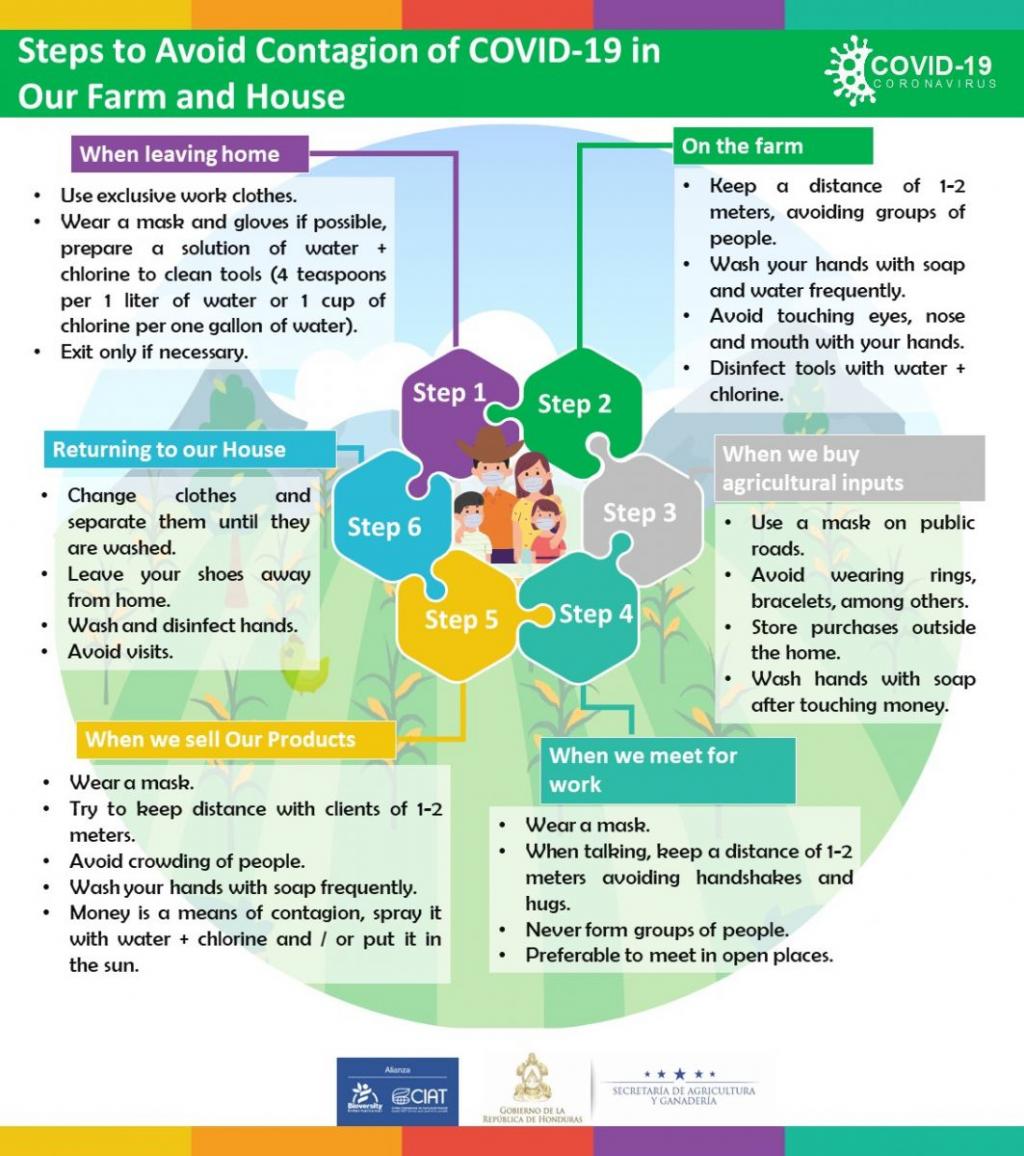Agroclimatic information helps fight COVID-19 in Latin America (Part 2)

The COVID-19 pandemic could have substantial impacts on agrifood systems in Latin America and the Caribbean (LAC), posing major challenges in terms of the contribution of agrifood systems to the economy, job creation and food security[1].
According to the Food and Agriculture Organization of the United Nations (FAO), LAC has sufficient food reserves for the coming months, but the region is exposed to an imminent food crisis unless measures are taken quickly to protect vulnerable rural populations, maintain food supply chains and mitigate pandemic effects on the food system [2].
In our previous blog: Agroclimatic information helps fight COVID-19 in Latin America (Part 1), the impacts of the pandemic on the agricultural sector in some Latin American countries were presented. Now, based on these findings, we give recommendations that have been addressed by Local Technical Agroclimatic Committees (LTACs), an approach that promotes open and clear dialogues about climate variations between key actors from the agricultural sector, to mitigate these impacts.
Recommendations for the agricultural sector during the pandemic
In countries such as Guatemala, Honduras, Nicaragua, Mexico and Colombia, LTACs have generated the following recommendations:
- Incentivize production: At the LTACs, the importance of grain production has been emphasized in order to avoid shortages, as is the case in some departments in the eastern region of Guatemala and Intibucá department in Honduras. Likewise, in Chiquimula, Guatemala, the recommendation is to maintain or increase planting areas for corn, beans, sorghum, and vegetables.
- Guarantee inputs: Encourage social programs to provide seeds and other priority agricultural inputs. It is recommended to go to seed banks if there is not enough seed available. In Somotillo, Nicaragua, farmers are encouraged to visit seed banks to obtain different varieties of corn, beans and sorghum.
- Food security: National institutions such as the Secretariat of Food and Nutritional Security (SESAN) and agencies such as the World Food Program (WFP) in Guatemala should focus on seasonal hunger trends that may be exacerbated by isolation. This is the case in the departments of Camotán, Esquipulas and Chiquimula. Similarly, food prices should be monitored to inform farmers about price changes. In response to this, the Ministry of Agriculture and Rural Development (MADR) in Colombia permanently monitors prices in the main country markets. Finally, crops diversification is recommended to ensure food security. In Somotillo, Nicaragua, some options for diversification are cassava, sweet potato, pipian, ayote, and alacin beans.
- Encourage local agricultural practices: To address the lack of access to fertilizers and other traditional inputs, it is important to continue implementing practices such as the use of biological inputs, low-cost agro-ecological practices and the use of local resources to meet crop nutrition needs. Similarly, in Boyacá, Colombia, it is recommended that food be exchanged between neighbors to avoid mobilization, and food transformation and conservation through artisanal agro-industrial practices in Zacapa, Guatemala.
- Appropriate communication channels: Digital tools have proven to be an effective way of disseminating agro-climatic information and recommendations for the agricultural sector during the pandemic. Countries are encouraged to use existing communication channels such as WhatsApp, social networks, local radios, telephone calls, LTAC focal points and extension services. In addition, local governments are encouraged to establish communication channels with farmers in order to find options to strengthen product mobilization. A good example of this is the dissemination of the call for the program "Boyacá feeds us", through WhatsApp and the agro-climatic bulletin generated in Boyacá’s LTAC so that producers can access inputs for planting corn, peas, beans, wheat and quinoa.

Source: CIAT, SAG-Honduras (ResCA)
In addition to local climate predictions and recommendations for agricultural practices in the context of COVID-19, the agro-climatic bulletin, generated after each LTAC meeting, now shows recommendations such as: using new packaging and washing baskets, tools and vehicles, among others.
Once again we see the importance of LTACs to support decision making in the agricultural sector. Thanks to the identification of impacts and recommendations generated, farmers can make informed decisions to maintain the productivity of their crops, combat climate change, but especially at this time, continue to provide food to the population in the midst of the health crisis.
Read more:
- Research highlight: Agroclimatic information helps fight COVID-19 in Latin America (Part 1)
- News update: COVID-19: An opportunity to speed up the transformation of agri-food systems
- News update: Strengthening climate services for agriculture in Latin America
[1] FAO (27 April 2020). Food Security under the COVID-19 Pandemic http://www.fao.org/americas/noticias/ver/es/c/1272991/
[2] FAO and ECLAC (20 May 2020). Food systems and COVID-19 in Latin America and the Caribbean: Impact and risks on the labour market. Available at http://www.fao.org/3/ca9237es/CA9237ES.pdf


